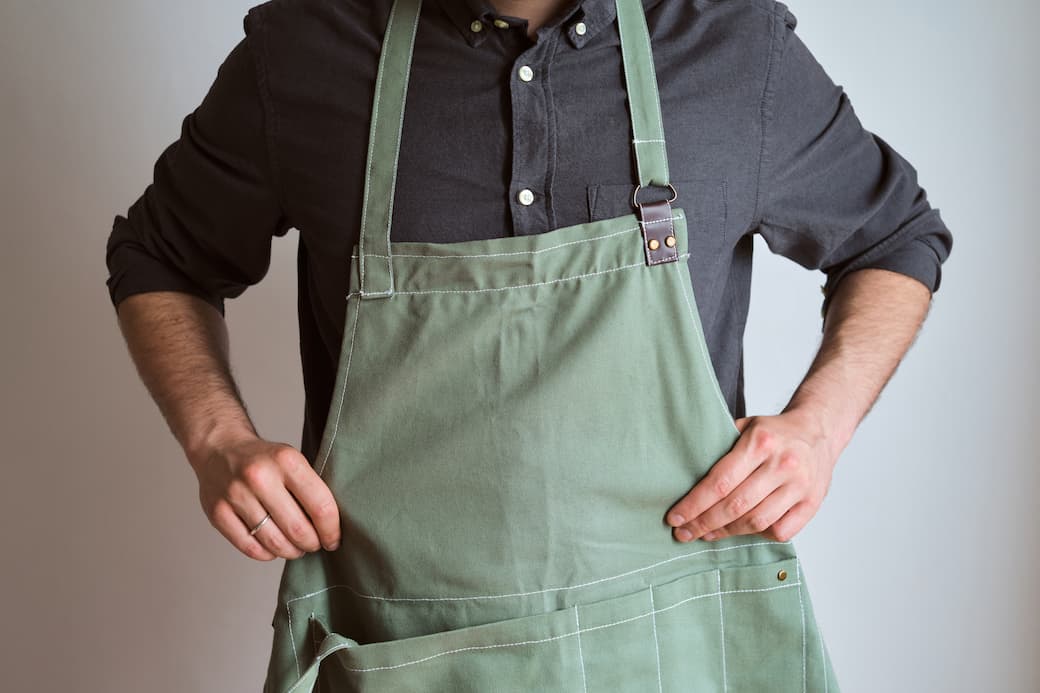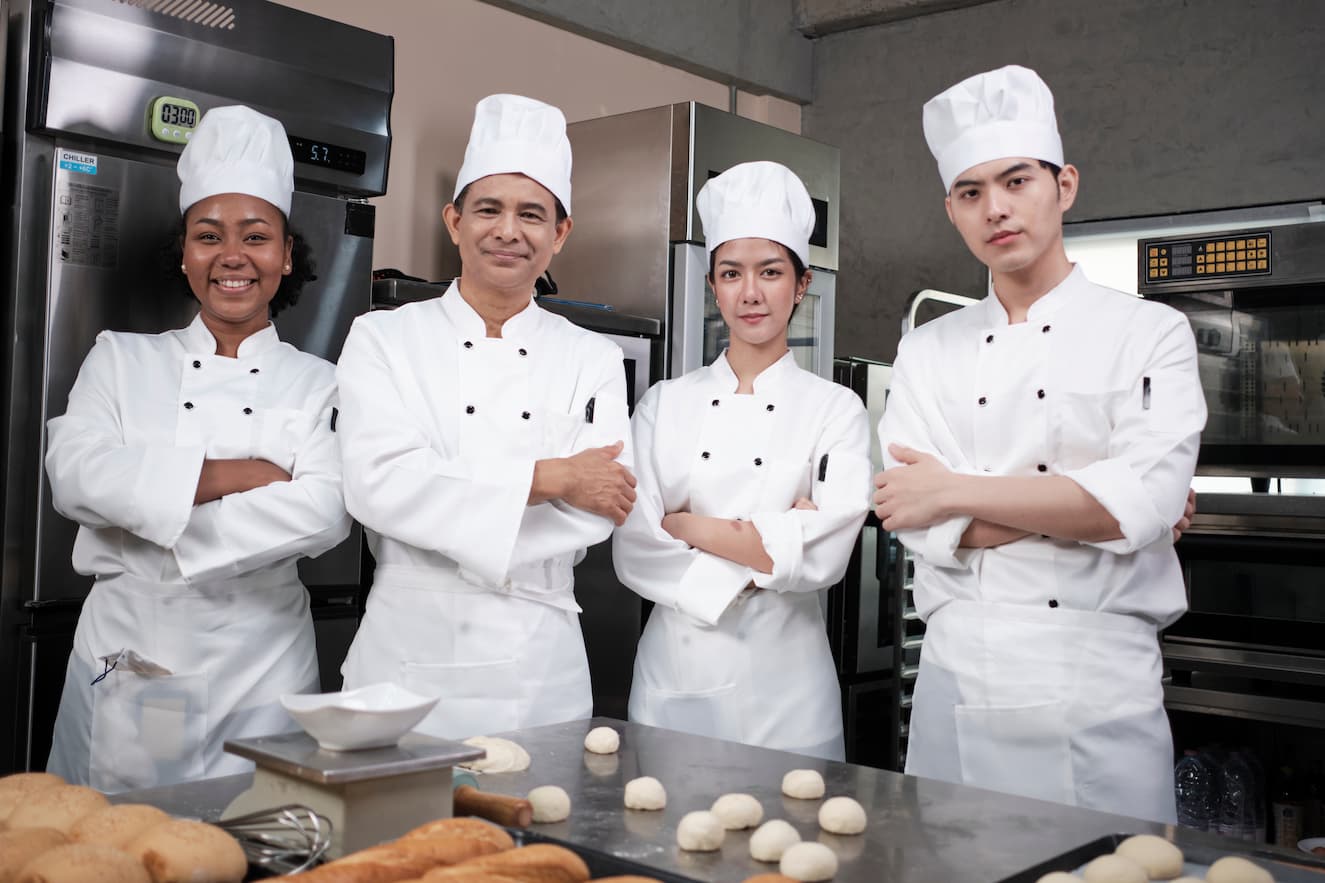What Are Standard Operating Procedures? How to Write an SOP (That Actually Gets Followed)
Learn what Standard Operating Procedures (SOPs) are and how to write effective SOPs that ensure consistency, efficiency, and safety in your...
A proper dress code promotes food safety and brand recognition for food businesses.
Having a dress code policy speaks more than just the branding of your food business. It can also translate your approach to food safety. A dress code policy for food service employees serves several benefits to your business's marketing and food safety aspects. A lot of thought processes must go into creating this policy to properly provide comfort for your employees, brand marketing for your business, and food safety for customers.
A food handler's clothing is part of the food hygiene list to reduce the likelihood of causing cross-contamination. Points such as a dedicated dressing area, appropriate uniforms, and guidelines for prohibited items to be worn must be included in the dress code policy for restaurant workers.
WHAT WE'LL COVER:
Food service employees are generally required to wear clean sets of uniforms, including shirts, pants, hair nets, appropriate shoes, and aprons. A dress code for kitchen staff aims to minimize the risk of cross-contamination in foods from dirty clothes.
All worn clothes must be free from holes, rips, loose buttons, and visible dirt. Food handlers working in direct contact with food must also wear effective hair restraints, such as a chef hat and other head coverages. In addition, food handlers are not allowed to wear any accessories except for a plain wedding band.
A strict dress code policy must be written in a documented guideline along with the other company policies. It must be clearly communicated to all of the employees as part of food hygiene training.
In some food businesses, the dress code may vary according to the theme of the food business, and uniforms may be provided. The general rule is that worn uniforms must not contribute to the contamination of food.

Having a clear set of rules for your dress code policies helps in completing the ambiance of your food business and promotes a stronger culture within your team. Providing a dress code can help your team maintain focus and safety at the same time. A dress code is more than a set of grooming standards.
Here are a few benefits of having an employee dress code policy in every food service business:
A proper dress code goes beyond aesthetics and looks in the restaurant industry. It is a significant part of food hygiene standards and an effortless marketing strategy. Involving the local health department and your team in the policy-making process can help address potential challenges with policies.
In addition to having a dress code, your team must also implement a regular food hygiene checklist to ensure compliance. Get the most intuitive digital solution to remember all food safety tasks with our digital Food Safety Management System (FSMS) at FoodDocs. Our system can generate the most essential food safety checklists and more in just 15 minutes.
A thorough written policy keeps expectations clear. Your food business dress code policy must be complete and inclusive, and it must prioritize safety. The policy will be provided along with an employee manual and must be emphasized to all incoming and existing employees.
Key elements of a dress policy are:
The dress code policy must be properly documented and verified in case of revisions. You can consult with local health departments regarding specific regulations on proper attire for food service operators to create effective policies.
Like any other food safety guideline, the dress code policy must be consistently implemented and observedthroughout your operations. Consistency in following the dress code policy is key to maintaining all of the benefits that it may have.
Use the following restaurant rules in enforcing your dress code policy:
As previously mentioned, non-compliance with the dress code policy may merit a violation and can cause bad publicity. If in case the non-compliance was observed by a health department inspection, the violation could cause a significant deduction to your overall evaluation.
Non-compliances, such as failure to wear hair restraints, wearing accessories, and maintaining a dirty apron, can significantly increase the risk of causing foodborne illnesses and related injuries. As a food business manager, clearly instruct employees on the importance of following the dress code and lay out the consequences of non-compliance.
Non-compliance with the dress code can pose serious food safety risks and business consequences. For example:
To address non-compliance, the manager should promptly correct the issue and explain why it matters. Repeated infractions should follow the policy’s disciplinary steps. Emphasize that following the dress code is a critical part of every employee’s job to protect customer health and the business.
The main reason food handlers wear clean clothing is to prevent cross-contamination of food products surfaces. Everyday clothes can carry dust, soil, and bacteria (including pathogens like Salmonella or E. coli). If these germs transfer from clothing to food or hands, they can cause illness.
Wearing a clean uniform and apron provides a clean barrier: it keeps harmful microorganisms off your body and away from food. In other words, protective clothing is a critical food-safety measure. Dirty or soiled clothes are a known food safety hazard because they may harbor pathogens that multiply in a food environment.
Consistently starting each shift in fresh, clean attire is essential to minimizing cross-contamination risk. Clean uniforms also maintain a professional appearance, which reinforces hygiene standards across the team.
Food handlers must come to work wearing neat clothing and uniforms. When contamination of the uniform occurs, such as food spillage, food handlers must immediately clean their clothes and, if possible, change. This guideline is also applicable to aprons.
Clothes, uniforms, hair restraints, and aprons must also be changed every shift change. Additionally, aprons must be changed after working with raw foods such as eggs and chicken. Food handlers must also thoroughly wash their hands before putting on their uniforms to minimize contamination.
In other words, here's how often:
These practices align with FDA recommendations (Food Code 2-304.11) and general food safety protocols. Remember: never work a second shift in the same clothes you left in the previous day. If extra uniforms are not available, an employee should be sent home to change or start in clean clothes.

Although inclusivity is highly encouraged in the food business workplace, there are particular articles of clothing that must not be worn when working with food. The FDA Food Code clearly identifies jewelry as a potential food safety hazard and, therefore, must not be worn in food service.
Food handlers are highly discouraged or prohibited from wearing the following:
By removing these items before entering the kitchen, food handlers comply with food hygiene standards and reduce physical and microbiological hazards.
These prohibited items can be considered food safety hazards to a food establishment. Every dress code policy aims to protect consumers and employees from food injuries and related circumstances. A restaurant uniform policy may vary from one food establishment to another but must always include what not to wear in the kitchen.
The dress code for a prep cook may significantly vary, but a prep cook should generally wear clean work clothes or a chef coat, an apron, clean pair of pants, non-slip work shoes, and an approved hair restraint.
Sometimes, prep cooks can . Prep cooks must learn the proper use of single-use gloves to avoid cross-contamination.
Prep cooks typically wear:
The goal is simple: wear durable, clean clothing that shields street clothes from raw ingredients and prevents anything from the cook (hair, sweat, pathogens) from reaching the food.
In the absence of a company-provided uniform, the dress code for a server includes clean clothes or dress shirts, a pair of work pants without rips, and closed footwear. A ponytail or an acceptable hair restraint is advised for servers with long hair.
Despite minimal contact with food preparation, food servers are also discouraged from wearing accessories to minimize the risk of cross-contamination.
Servers’ uniforms can vary, but generally include:
Even though servers have less direct contact with food, they must follow food safety attire rules in service areas. For instance, servers clearing tables or expediting food must avoid touching their clothes and should not carry street germs into the dining area.
An apron is essential protective gear for any commercial kitchen. It provides a certain level of protection against contamination and soiling of your clothes.
Using an apron during food preparation promotes proper food hygiene and protection from accidents. Food handlers who wear aprons are less likely to accumulate burns in case of accidents.
Aprons prevent cross-contact between clothing and food and serve as the first line of defense against kitchen hazards.

Kitchen staff using aprons should change aprons:
Following these guidelines (aligned with FDA Food Code section 2-304.11 on clean outer clothing) ensures that aprons remain hygienic and effective at protecting against contamination.
A food service worker should remove their apron before leaving the kitchen or food-preparation area. Specific times to take off the apron include:
After removing an apron, food workers should wash hands before putting on a fresh apron (if returning to food prep). Proper storage of used aprons (in a laundry bin or designated area) keeps contaminants contained. This practice exemplifies good hygiene by preventing cross-contamination between the kitchen and other areas.
No. Aprons must always be removed before using the bathroom. Wearing an apron in the restroom (or any non-kitchen area) risks dragging contaminants back into the kitchen.
As a best practice, unfasten and hang up your apron, wash your hands, use the restroom, then wash your hands again before donning a clean apron if you return to food prep. This simple step prevents the spread of germs and maintains food safety compliance
No, it is not OK to wipe your hands on your apron. Wiping hands on an apron is not acceptable because the apron is a contamination risk, not a towel. Aprons collect food particles and bacteria throughout service. Using your apron as a hand towel will transfer those pathogens back onto your hands (and later to food or surfaces).
Proper alternatives include always using designated towels, paper towels, or hand-washing sinks. Dry hands completely with a clean towel after washing and do not rely on the apron for drying. Maintaining clean hands and avoiding apron contact reduces cross-contamination.
An apron is considered a safety item because, as a protective barrier, it keeps contaminants on the apron instead of on the body or food. It also protects the individual wearing the apron from:
For all these reasons, aprons are listed in food safety guidelines as mandatory protective clothing for kitchen staff.
Half-aprons (waist aprons) are commonly used by front-of-house staff, such as servers and bussers. They cover the lower torso and upper legs but leave the upper body free. The benefits are:
Light protection: They catch food crumbs and spills from the waist down (e.g. when serving soup or carrying plates), protecting uniforms and providing a quick visual cue of cleanliness.
However, half-aprons do not protect against overhead splashes, so they are mainly a practical choice for service staff rather than chefs.
Aprons that extend below the knees offer extra protection for servers and cooks who frequently lean over tables, benches, or floor-level tasks. A longer apron:
While not always mandatory, a longer apron is good practice whenever there’s a chance of significant spillage or bending. It’s another layer of defense in maintaining a clean and safe environment.
Yes, wearing a dirty apron can transfer germs directly into food and contaminate it. Food residue, grease, and debris on an apron become breeding grounds for bacteria. If you touch that apron and then handle food, or if the apron brushes against an open dish, those pathogens go into the food.
For example, a bloody or oily apron can drip and create a hazard on cutting boards or utensils. This is why aprons must be changed and washed regularly.
The primary risk is cross-contamination. Dirty clothing and aprons harbor biological contaminats (bacteria, viruses, fungi) and physical contaminants (crumbs, hair, lint). For example:
Dirty clothes break the chain of hygiene. Maintaining clean attire at all times is one of the simplest yet most critical ways to prevent foodborne illness.

The best way to prevent food contamination from dirty clothing is to practice strict food hygiene protocols and grooming practices. This aspect of food safety includes following the restaurant dress code and other food hygiene kitchen rules, such as proper handwashing.
These operations must be consistently monitored and observed to minimize the risk of causing foodborne illnesses. To do this, use checklists and comprehensive monitoring systems to ensure that all food handlers know the dress code policy and follow it accordingly.
Practically, this looks like:
Consistently applying these measures, alongside the dress code, creates multiple barriers against contamination. Many food safety plans (HACCP) emphasize personal hygiene, of which clothing cleanliness is a cornerstone.
Following the dress code policy is an everyday task, as well as other food hygiene operations. Forgetting to observe the proper attire for food handlers can introduce significant food safety hazards to your food business. In addition, government inspection officers are particular about keeping the workplace safe from contamination.
To ensure that your employees always follow your designated dress code, your team must have a comprehensive food safety management system. FoodDocs is more than just a regular monitoring system. It is a fast digital solution that can ensure overall consistent compliance with food safety and hygiene regulations.
With our digital solution, you can get the following features and benefits:

Assuring food hygiene compliance is a huge task for every food business and food safety manager. Our system offers features that can help you improve efficiency while allowing you to focus on other aspects of your business.
Setting up our digital FSMS takes only 15 minutes with the help of artificial intelligence and a machine learning program. The system that our digital solution will provide for you is complete and based specifically on your food safety operations.
You can customize all automatically generated food safety monitoring logs and checklists to further fit your operations. Ensure compliance using a more efficient digital platform
Use our free 14-day trial to experience all of our system's features, and start your food safety journey with us today.
Do you have some specific questions or clarifications regarding the dress code for food service? Check out these frequently asked questions below:
Removing an apron before using the restroom is an example of good employee hygiene. Taking off the apron helps stop bacteria from spreading and reduces the risk of contamination. This is crucial in food preparation areas where cross-contamination is a concern.
If a food handler comes to work in a dirty uniform and extras are unavailable for the employee, they must be sent home and prohibited from working until they can come back to the workplace in a proper and clean uniform.
Aprons should be changed every shift. Once a shift ends, food service employees must remove the used apron (even if it isn't visibly dirty) and put it in the laundry bin. If the apron is damaged or stained at any point, employees can replace them sooner.
Most food service businesses do not allow food handlers to wear tank tops as they expose too much skin. Some foodborne pathogens naturally live on human skin and can only be removed through proper handwashing. Prolonged exposure to heat and external factors can increase the risk of cross-contamination.
While no strict code prohibits wearing shorts to food service, this increases the risk of injury, burns, and cuts on the food handler's legs.
Guidelines for restaurant server dress code policy are more lenient when it comes to sleeveless shirts. On the other hand, food handlers working at the back of the house should be warier of the kitchen dress code policy. Sleeveless shirts expose skin and have more risk of sweat dropping into the prepared food.
While less formal than black trousers, black jeans can be worn as an alternative. Casual dress code types will also depend on the local protocol of your food business.
Learn what Standard Operating Procedures (SOPs) are and how to write effective SOPs that ensure consistency, efficiency, and safety in your...
Boost your retail food safety with essential practices and digital tools to protect customers and your brand. Plus a free Retail Food Safety Leader...
Discover the best restaurant management software solutions broken down by inventory, table and reservation, food safety, POS systems, scheduling, and...